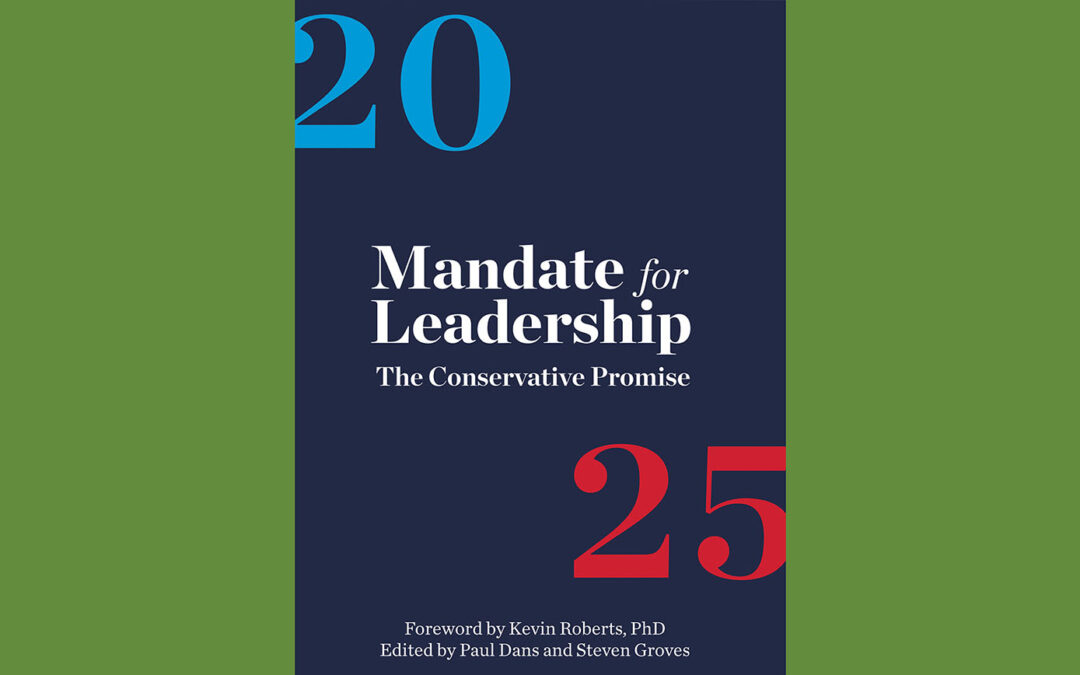Mandate for Leadership: The Conservative Promise is the pro-Trump playbook produced as the centerpiece of the Heritage Foundation’s Project 2025 agenda. The 920-page manifesto lays out a plan “to address and reform the failings of big government and an undemocratic administrative state.” What does this mean for public lands?
Each Cabinet-level department gets its own chapter. The Forest Service, a lowly agency in the Agriculture Department, gets short shrift — little more than a single page titled “Reform Forest Service Wildfire Management.” Driving the need for reform is the complaint that “Wildfires have become a primary vegetation management regime for national forests and grasslands.” Wildfires, by definition, are uncontrolled, yet wildfire is somehow being managed by the Forest Service? The solution is for the Forest Service to “focus on proactive management … that does not depend heavily on burning.”
Proactive management means “thinning trees, removing live fuels and deadwood, and taking other preventive steps … to minimize the consequences of wildfires.” Armed with billions of dollars of wildfire funding from the Biden administration, the Forest Service already spends far more on thinning trees than it does on prescribed fire. Another huge chunk of spending goes to fighting wildfire, not using it as a management technique. Mark Finney is a research forester at the Forest Service Missoula Fire Sciences Lab. As he told us, “The only way to maintain a forest in a low-hazard condition is through repeated burning.” The scale of our forests, hundreds of millions of acres, makes any meaningful level of mechanical thinning impossible.
And those “other preventative steps”? “Increasing timber sales could also play an important role in the effort to change the behavior of wildfire because there would be less biomass.” Increasing timber sales requires ramping up logging to unsustainable rates and eradicating the last remnants of U.S. old-growth forests. Even then, what Project 2025 is promoting as good capitalism — timber sales — requires massive government subsidies. Logging on public lands can no longer pay for itself because all of the large, easily accessible trees have already been cut.
William Perry Pendley and his cronies in the extractive industries authored the Interior Department chapter in Mandate for Leadership. Pendley has long advocated for selling off public lands but is perhaps best-known for illegally serving as acting director of the Bureau of Land Management for more than a year in the Trump administration. In his “Agency Overview,” Pendley praises Trump for ordering the Interior Department “to comply with federal law.” At last count, the Trump administration lost 79 of 85 legal challenges involving federal agency policy issues — by far the worst rate of any administration in U.S. history — and many of those cases involved unlawful actions affecting public lands.
Pendley laments, “the dire adverse national impact of Biden’s war on fossil fuels,” yet U.S. petroleum production and corporate profits reached record highs during Biden’s presidency. Under this false pretense that Biden policies have hamstrung fossil fuel and mineral extraction, Pendley calls for eliminating public land protections across the nation — the Arctic National Wildlife Refuge in Alaska; the Chaco Cultural Historic National Park in New Mexico; the White River National Forest in Colorado; the Tongass National Forest in Alaska; the Boundary Waters Canoe Area Wilderness in Minnesota; and BLM lands in Alaska, Oregon and California.
With a plan based on abundant falsehoods and paltry science, what could possibly go wrong?


